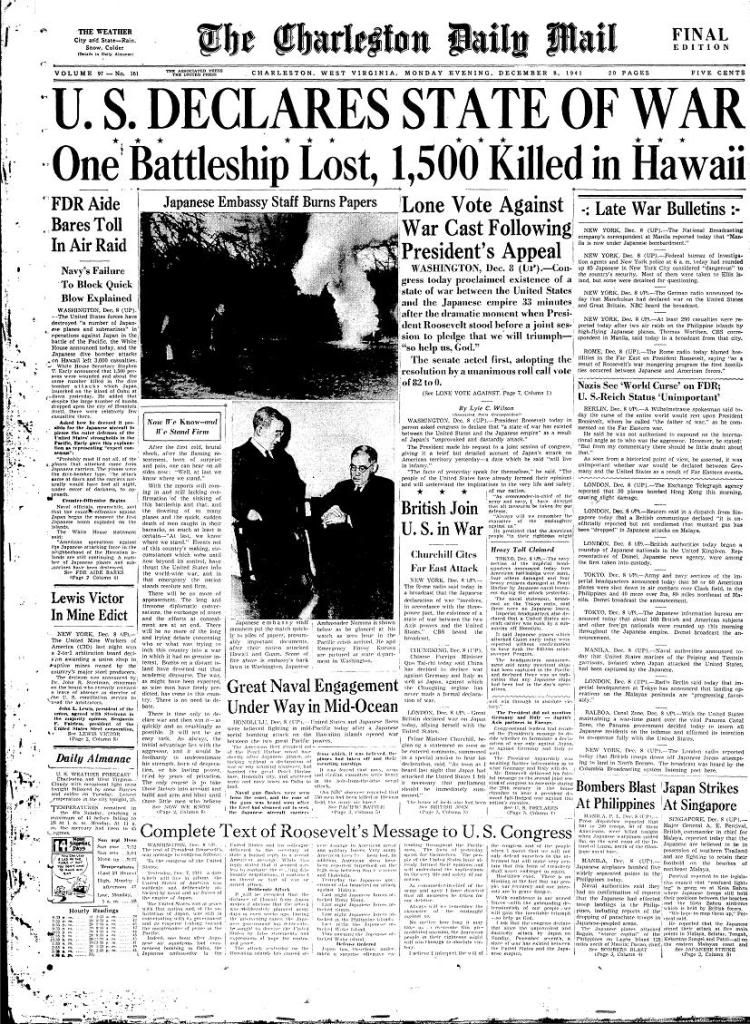
The Year was 1941 and it opened with President Franklin Delano Roosevelt’s famous Four Freedoms Speech. In this State of the Union address, the president told Congress and the country that “the future and the safety of our country and of our democracy are overwhelmingly involved in events far beyond our borders.” Following World War I, the U.S. had reverted to isolationism, with the majority of the public not favoring involvement in foreign disputes, but the tide was slowly turning as many Americans began to ponder the impact of Axis victories in Asia and Europe and wonder about the extent of their ambitions.
The Four Freedoms Speech would inspire Norman Rockwell to create four paintings depicting these freedoms, which would later be used as posters to help sell war bonds.
In March, Roosevelt signed the Lend-Lease Act into law, which allowed the U.S. “To manufacture in arsenals, factories, and shipyards under their jurisdiction, or otherwise procure. . . any defense article for the government of any country whose defense the President deems vital to the defense of the United States.” This made the way for the shipment of much-needed supplies to Allies like Great Britain and Russia, including food, aircraft, ships and land vehicles. In a press conference, Roosevelt compared the program to lending a neighbor whose house was on fire a garden hose to help extinguish the flames, saying that he wouldn’t want to charge that neighbor for the hose, but rather, he would just like the hose returned when the fire was out.
The year would end with the Japanese attack on Pearl Harbor and the U.S. declaring war on Japan and Germany.
(MORE...)